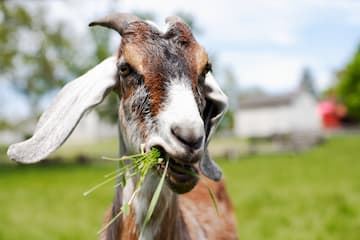Milk Fever in Goats
Mar 08, 2019

 What causes milk fever in goats
What causes milk fever in goatsWith the onset of milk production after giving birth, your goat must supply a large quantity of calcium with her milk. The goat normally has more than enough calcium reserves in her bones, but if she has been on a diet high in calcium during her dry period, her body may have “forgotten” how to mobilize those calcium reserves because it hasn’t needed to. Consequently, when she starts lactating, and she needs to deliver calcium to the mammary glands for milk production, her blood calcium levels may fall to a dangerous level, resulting in what is known as milk fever.
Symptoms of goat milk fever and what to do
Moderate milk fever will make the goat lethargic, with poor appetite and poor milk production. Acute cases of milk fever can leave the goat in a coma; she will need immediate veterinary attention. Your veterinarian will need to administer calcium gluconate directly into the bloodstream to restore the normal concentrations of blood calcium and re-establish your goat’s health. Your goat cannot absorb enough calcium nor can she absorb it fast enough from food to meet the immediate needs of lactation, and if she is ill, she won’t be eating anyway.
How to prevent milk fever in your goats
You can help address milk fever in goats by not feeding too much high-calcium feed, such as alfalfa, during late pregnancy. Grass hay or pasture is a much better choice during the dry period. If the doe’s body does not get all the calcium it needs in the feed, it will start pulling calcium reserves from the bones. By the time the doe gives birth and begins milking, the body is accustomed to quickly mobilizing bone calcium, and the doe will not suffer a potentially fatal drop in blood calcium. You can then gradually begin feeding high-calcium feeds again to support the calcium needs of lactation. As the goat progresses through lactation and begins to decrease her milk production, this higher dietary calcium will be used to restore bone reserves so she will be ready for her next lactation period.
-Purina Animal Nutrition